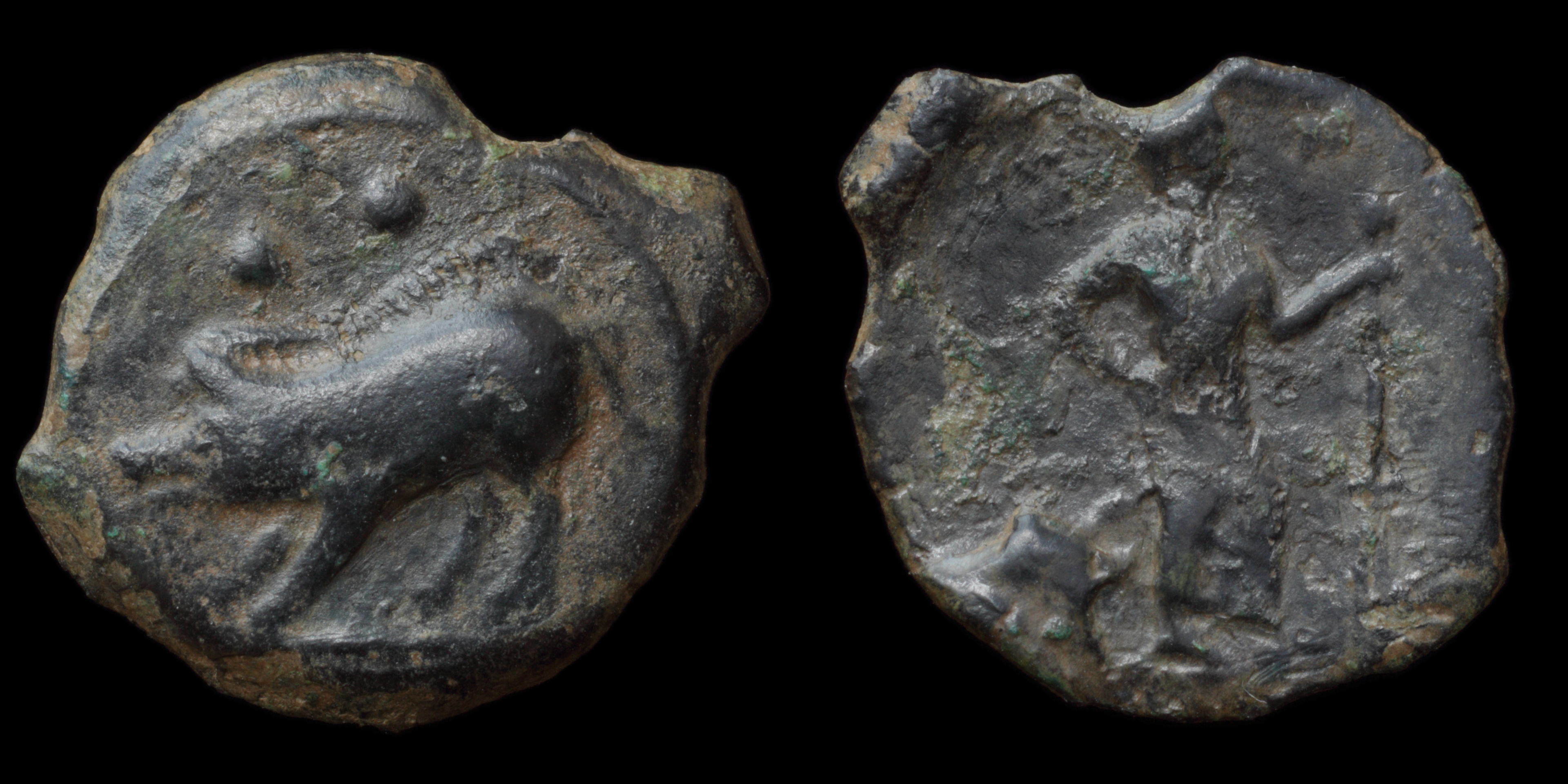Halyciae (Halykiai, Halykiae) is the ancient name of the Elymian settlement on the island of Sicily, known as Alicia in more recent Italian scholarship.
Though its present location is not known precisely, recent excavations conducted in Sicily indicate that the present city of Salemi in the province of Trapani is built upon the ruins of old Halyciae.
In 272 BC, Salemi (then known as Alicia) was conquered by the Romans and declared a free city and free from taxes for its voluntary submission.
In the fifth century, like the rest of Sicily, Salemi fell under the dominion of the Vandals, and then under that of the Goths.
In 535, it was conquered by the Byzantine Belisarius, the general of Justinian.
In 827, Salemi fell under the control of the Arabs, and the area prospered. It was during this time that the name Salemi seems to have originated. The urban center was structured then, and remains in the same configuration today. In terms of agriculture, the Arabs introduced many new crops to Salemi and the surrounding areas: oranges, lemons, peaches, apricots, asparagus, artichokes, cotton, eggplant and spices such as saffron, cloves and cinnamon.
In 1077, and then in later Norman times, the town experienced a remarkable development. During this period, the castle was built.
In 1194, it came under the domination of the Swabians.
In 1266, the death of Frederick II, began the Angevin period, which reduced the amount of the population in poverty.
In 1296, Frederick III of Aragon had Salemi downgraded to a feudal city.
In 1392, Salemi became an independent municipality.
In 1441, on December 11, in the castle of Salemi a confederation made up of Salemi, Trapani, Mazara, Monte San Giuliano and by the barons of Castelvetrano and Partanna was formed which undertook the defense, and bore the costs, of the Queen White and Royal House of Aragon. Salemi was, therefore, more fortified and garrisoned during the raids of the Turks.
In 1735, with the coronation of Charles III of Spain as King of Sicily on June 30, the Bourbon rule began.
Though its present location is not known precisely, recent excavations conducted in Sicily indicate that the present city of Salemi in the province of Trapani is built upon the ruins of old Halyciae.
In 272 BC, Salemi (then known as Alicia) was conquered by the Romans and declared a free city and free from taxes for its voluntary submission.
In the fifth century, like the rest of Sicily, Salemi fell under the dominion of the Vandals, and then under that of the Goths.
In 535, it was conquered by the Byzantine Belisarius, the general of Justinian.
In 827, Salemi fell under the control of the Arabs, and the area prospered. It was during this time that the name Salemi seems to have originated. The urban center was structured then, and remains in the same configuration today. In terms of agriculture, the Arabs introduced many new crops to Salemi and the surrounding areas: oranges, lemons, peaches, apricots, asparagus, artichokes, cotton, eggplant and spices such as saffron, cloves and cinnamon.
In 1077, and then in later Norman times, the town experienced a remarkable development. During this period, the castle was built.
In 1194, it came under the domination of the Swabians.
In 1266, the death of Frederick II, began the Angevin period, which reduced the amount of the population in poverty.
In 1296, Frederick III of Aragon had Salemi downgraded to a feudal city.
In 1392, Salemi became an independent municipality.
In 1441, on December 11, in the castle of Salemi a confederation made up of Salemi, Trapani, Mazara, Monte San Giuliano and by the barons of Castelvetrano and Partanna was formed which undertook the defense, and bore the costs, of the Queen White and Royal House of Aragon. Salemi was, therefore, more fortified and garrisoned during the raids of the Turks.
In 1735, with the coronation of Charles III of Spain as King of Sicily on June 30, the Bourbon rule began.
Modern location: Salemi, Italy

